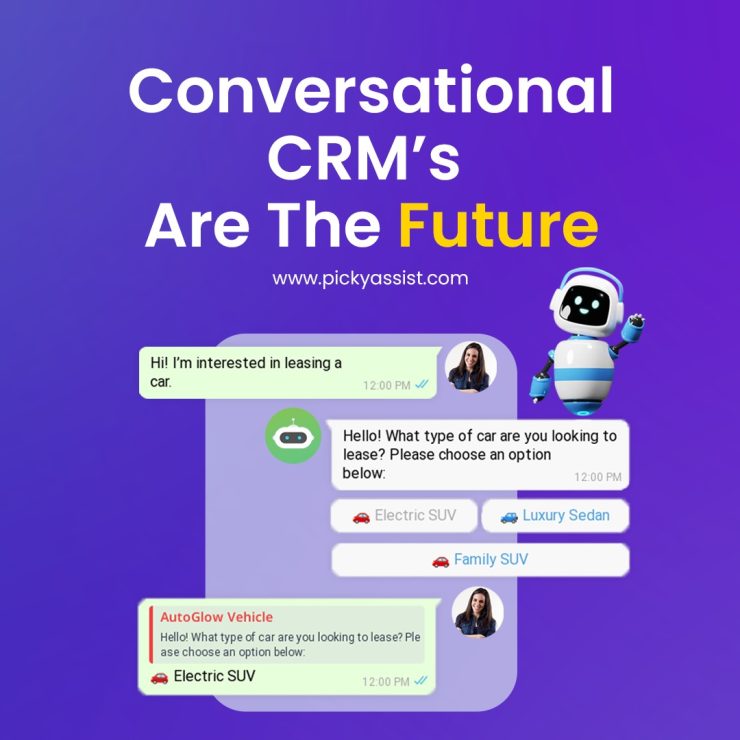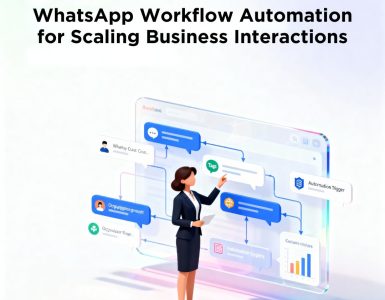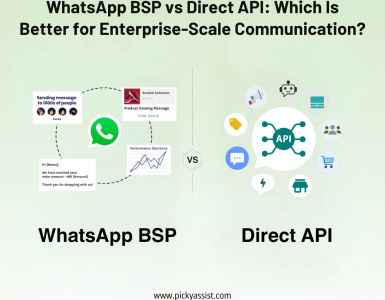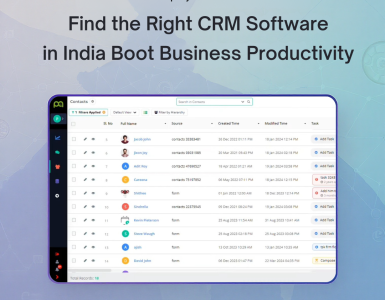Customer Relationship Management (CRM) systems have undergone significant evolution, from simple contact databases to sophisticated platforms that streamline sales, marketing, and customer service. The future of CRM lies in the advent of Conversational CRMs, which leverage artificial intelligence (AI), chatbots, and natural language processing (NLP) to engage with customers in real time. This article explores the history of CRM, its evolution, current trends, and how conversational CRM will shape the future of customer interactions, going far beyond data entry to become the single source of truth capable of engaging, selling, and supporting customers.
1. History of CRM: From Rolodexes to AI-Driven Systems
The origins of CRM can be traced back to the pre-digital era when businesses relied on physical Rolodexes and manual record-keeping to maintain customer contact information. As technology advanced, CRM systems emerged as software tools in the 1980s and 1990s, focusing primarily on automating sales processes.
- Early CRM Solutions (1980s-1990s): Software such as ACT! and GoldMine were among the first CRM tools that helped sales teams organize customer contacts. These systems, however, were little more than digital address books.
- Modern CRM Era (2000s): The turn of the millennium saw the rise of web-based CRMs, with Salesforce leading the market by introducing cloud-based solutions that combined sales automation, customer service, and marketing functions. The emphasis shifted towards integrating various customer touchpoints.
- Data-Driven CRMs (2010s): With big data analytics and AI gaining traction, CRMs evolved to incorporate advanced data analysis, predictive sales forecasting, and customer insights, allowing businesses to make data-driven decisions.
2. The Evolution of CRM: From Data Entry to Conversational Experiences
Over the years, CRM platforms evolved from mere data repositories to tools that enable organizations to engage with customers more meaningfully. The shift from data entry to conversational experiences marks a turning point in CRM’s journey.
- Legacy CRMs: Traditional CRM systems focused heavily on logging customer data manually, tracking customer interactions, and maintaining records. While these systems were useful for keeping sales and customer service teams organized, they offered limited capabilities beyond data storage.
- The Integration Phase: As businesses recognized the need to unify sales, marketing, and service processes, CRM platforms started integrating with various third-party applications, including email, social media, and e-commerce platforms, enabling a more holistic approach to customer management.
- Conversational CRM Era: Today, CRMs have reached a new stage where AI, chatbots, and automation can hold human-like conversations, respond to customer queries, and even make sales recommendations. This evolution transforms CRMs from static databases into interactive platforms capable of engaging customers at every stage of their journey.
3. Trends and Changes in CRM: Why Conversational CRM is the Future
Several emerging trends are driving the adoption of conversational CRMs, making them the future of customer engagement:
- Rise of AI and Chatbots: AI-powered conversational interfaces enable CRMs to understand and respond to customer inquiries in real-time. Chatbots can automate routine tasks, such as answering frequently asked questions or scheduling appointments, freeing up human agents for more complex interactions.
- Single Point of Truth: A conversational CRM integrates data from multiple channels (e.g., social media, email, chat, phone) to provide a unified view of each customer. This centralization ensures that every team member has access to up-to-date information, enabling personalized customer experiences.
- Hyper-Personalization: The use of AI allows CRMs to analyze customer behavior and preferences, enabling businesses to deliver highly personalized content and offers. Hyper-personalization goes beyond traditional segmentation, offering one-to-one engagement at scale.
- Voice and Natural Language Processing (NLP): As voice search and voice-activated assistants gain popularity, conversational CRMs incorporate voice capabilities to allow customers to interact with businesses via spoken commands. NLP enhances the accuracy of responses, making automated conversations more natural.
- Mobile-First Experiences: With the increasing reliance on mobile devices, conversational CRMs are optimized for mobile use, providing customers with instant access to support and sales assistance, regardless of their location.
- Integration with IoT Devices: The Internet of Things (IoT) is adding new touchpoints for customer interaction, such as smart appliances or wearable devices. Conversational CRMs can integrate these devices to offer seamless customer support experiences.
4. How AI, Chatbots, and Automation Will Transform the CRM Industry
Conversational CRMs are set to disrupt the traditional CRM model by harnessing AI and automation to deliver real-time, contextual interactions. Here’s how these technologies are transforming the industry:
A. Beyond Data Entry: The New Age of CRM
- Automated Data Collection: AI can automatically capture customer interactions across multiple channels (e.g., social media, email, phone), reducing the need for manual data entry. This automated data capture ensures that CRM data is always current and accurate.
- Smart Follow-Ups: Conversational CRMs can automate follow-up tasks based on customer behavior, such as sending reminders if a customer hasn’t completed a purchase or offering support if a customer seems dissatisfied. This minimizes the risk of missed opportunities and enhances customer satisfaction.
- Predictive Insights: AI-driven CRMs can analyze customer data to predict future behaviors, such as the likelihood of making a purchase or churning. These insights enable businesses to take proactive measures, like offering targeted promotions or providing specialized support.
B. The Single Point of Truth: Unified Customer Data
- Breaking Down Data Silos: Traditional CRMs often suffer from data silos, where information is fragmented across departments. Conversational CRMs integrate data from various sources, creating a comprehensive view of each customer that is accessible to sales, marketing, and service teams.
- 360-Degree Customer View: By consolidating customer data, conversational CRMs provide a complete picture of the customer journey, including purchase history, support interactions, and social media engagements. This “single point of truth” empowers teams to deliver consistent and informed customer experiences.
C. Talking, Selling, and Supporting Customers: The Conversational Advantage
- Conversational Selling: With conversational capabilities, CRMs can guide customers through the sales funnel, providing product recommendations, answering queries, and assisting in the decision-making process. Chatbots can engage with customers across multiple touchpoints, boosting conversion rates.
- Conversational Support: AI-powered conversational CRMs can handle support requests in real-time, escalating complex cases to human agents when necessary. This reduces response times and improves the quality of support.
- Conversational Marketing: Conversational CRMs can be used to nurture leads by sending personalized content, such as product recommendations or educational materials, based on customer behavior and preferences.
5. The Future of Conversational CRMs: What’s Next?
The future of conversational CRMs is poised for continued growth and innovation. Here are some key areas where conversational CRM will make a significant impact:
- Self-Learning Systems: As AI algorithms become more sophisticated, conversational CRMs will improve their ability to learn from customer interactions, adapting to changing preferences and providing more accurate responses over time.
- Augmented Reality (AR) and Virtual Reality (VR) Integrations: AR and VR technologies can be integrated into conversational CRMs, allowing customers to interact with products in virtual environments, enhancing the buying experience for industries like real estate, retail, and automotive.
- AI-Driven Predictive Selling: With advanced predictive analytics, conversational CRMs will anticipate customer needs before they arise, offering personalized recommendations and upsell opportunities at the right moment.
- Voice-Activated CRMs: The increasing use of voice assistants like Alexa and Siri opens the door for voice-activated conversational CRMs that allow customers to interact with businesses through voice commands, making customer engagement more accessible and convenient.
6. Conclusion: Conversational CRMs Are More Than Just Tools—They Are Partners
The future of CRM lies in conversational capabilities, where AI, chatbots, and automation transcend the limitations of traditional systems. By moving beyond data entry to become dynamic, interactive platforms that can talk, sell, and support customers, conversational CRMs represent a fundamental shift in how businesses interact with their customers. The single point of truth, real-time engagement, and hyper-personalization features make conversational CRMs an indispensable asset for companies looking to stay ahead in an increasingly competitive market.







Add comment